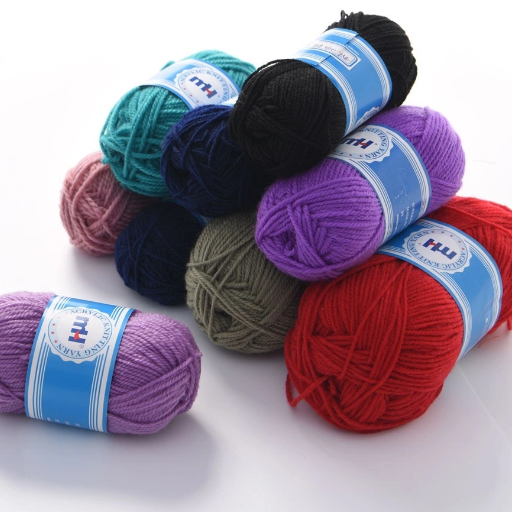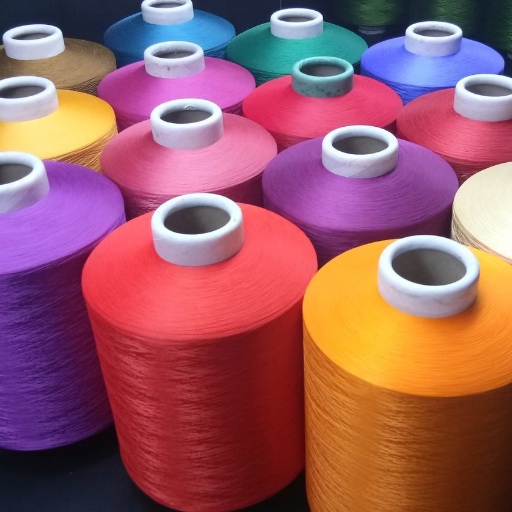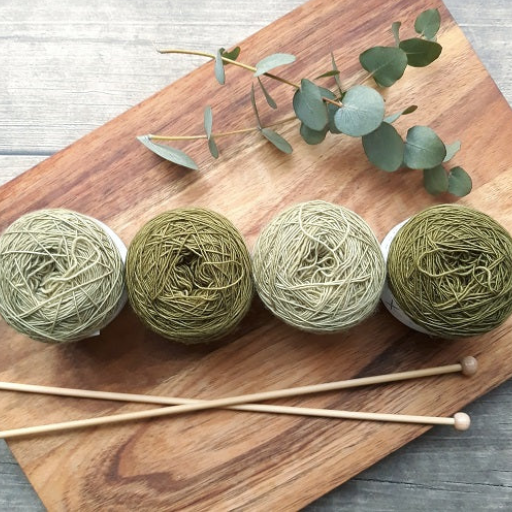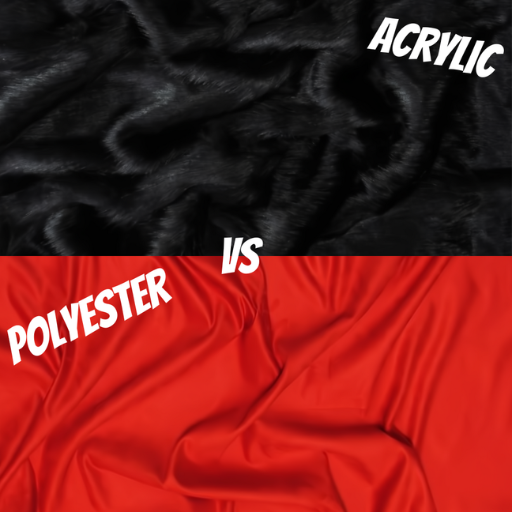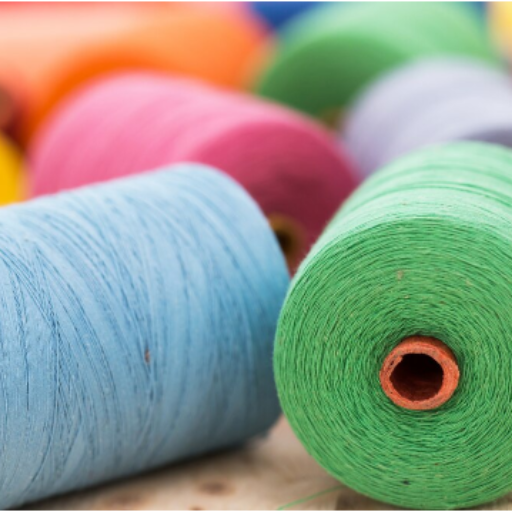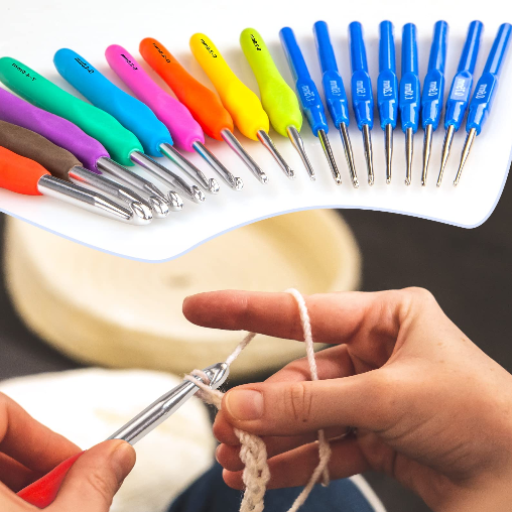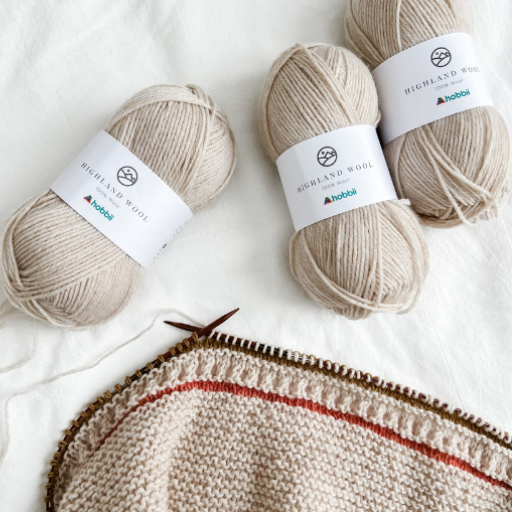When you start crocheting, you start with something very basic; you choose the wool that you are going to use. Among the many choices, acrylic and cotton yarn are two common and contrasting materials for crochet and other crafts. Choosing between the two kinds of yarn? The basic differences between acrylic and cotton yarn will prevent one from making a wrong decision, which may result in a costly error. This article is a detailed analysis of the difference between acrylic and cotton yarn, highlighting the fibers, advantages, disadvantages, and the most appropriate projects for both specific yarns. Now, whether warming up with a blanket, wearing a shawl, or accessorizing with a purse, there are materials and projects where it is best to use that type of yarn.
Understanding Yarn Types
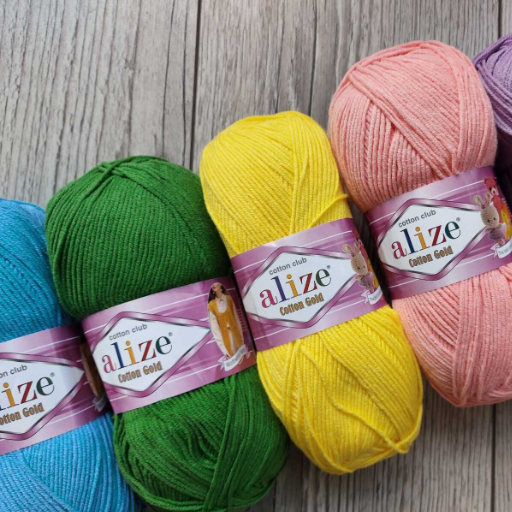
Acrylic yarn is a man-made fiber manufactured using polymerized plastic compounds and offers various benefits at reasonable prices. It is commonly referred to as lightweight and machine-washable, which means that there is no likelihood of it being faded or shrunk, and thus has been the favorite for beginner and economical projects. There is no better acrylic yarn than that for something like a blanket or a scarf or any other such accessory because of its durability and easy care.
Cotton yarn is a yarn made or derived from cotton, which is a natural fiber and is appreciated because it is light and has a hard, smooth, and tough texture. The meshwork can hold liquid very well, thus best applied in the making of summer wear, dishcloths, and baby products. However, cotton yarn is not as elastic as cotton acrylic is and hence rather than being stretchy, it is firm, and this can be a negative aspect in that the while structure may not rip, it will shrink or sag while doing the laundry inappropriately.
Acrylic Yarn: Characteristics
- Material Composition: Also known as polymers of acrylonitrile, it contains other fibers that impart softness and enhance performance.
- Durability: Showing great resistance to wearing and thus ensuring long use of its fibers.
- Maintenance: Suitable to be washed by a washing machine and does not necessitate great care during cleaning.
- Elasticity: It has an intermediate stretch factor, which offers relief when additional stretch is needed while maintaining stability in the workpiece.
- Color Options: Comes in an extensive color palette, which strongly resists fading.
- Moisture Resistance: Has a low capacity for water penetration, which ensures that it crumbs do not sing and dries quickly.
Cotton Yarn: Characteristics
- Softness: Cotton yarn is praised for its soft structure which makes it very convenient as garments and textiles. This feature is appreciated especially when clothing is worn either on a daily basis or for those, who have very sensitive skin.
- Breathability: Such kind of fabric is also very airy and allows the body to breathe easily. In addition, warm moist civilizations bring convenience and also reduce the risk of sweating and exudations of the body temperature especially when it is very cold or hot.
- Durability: High resistance to strain elongation and breakage. It is tough, does not lose shape, and can be treated without affecting it over the years, even after washing it several times.
- Moisture Absorption: Heavy in density, it can absorb over a quarter of its weight in water. While this property aides convenience, it should be noted that it will take up more time to dry as compared to other synthetic material.
- Hypoallergenic Properties: The cotton doesn’t have an allergenic effect and it’s not pricky, there is a minimal possible rash or skin irritation with the use of this cotton yarn. Hence, cotton yarn is mostly used for babies and medical purposes.
Comparing Acrylic and Cotton Yarn
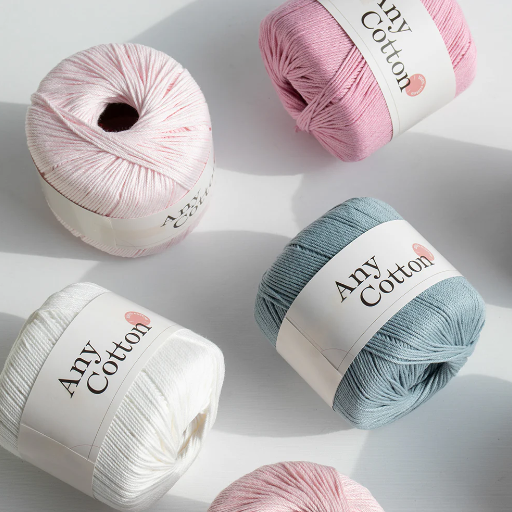
- Durability and Longevity:
Acrylic yarn does not easily wear out and is good for things like blankets or other accessories that will be used regularly. On the other hand, cotton yarn, though strong, does not fare well with frequent exposure to water and washing as, in most cases, failure to provide proper care makes these products wear out faster.
- Moisture Management:
The absorption capacity of cotton yarn is high, and one can say it can hold off moisture. This can be useful in clothing. However, it will make the garments dry slowly. But with acrylic yarn, it is the opposite case as it is water protective, dries fast, and has less retention of moisture.
- Comfort and Skin Sensitivity:
Cotton yarn is breathable and hypoallergenic, therefore, more beneficial for people with sensitive skin and infants. In contrast, acrylic yarn although soft especially at present, is a product of chemical processes that may not be as comfortable on the skin as cotton.
- Care and Maintenance:
Acrylic Yarns are easy to manage, can be washed in a machine and do not shrink after washing which makes them suitable for daily use. Meanwhile, more refined care is emphasized in cotton yarns for the maintenance of their quality, thereby causing air desirable drying techniques and washing using cool water systems.
Acrylic Yarn vs Cotton: Key Differences
|
Parameter |
Acrylic Yarn |
Cotton Yarn |
|---|---|---|
|
Material Origin |
Synthetic, man-made fibers |
Natural, plant-derived fibers |
|
Texture |
Soft but often less breathable |
Soft, breathable, and hypoallergenic |
|
Durability |
Highly durable, resistant to wear |
Strong but prone to wear over time |
|
Washability |
Machine washable, no shrinkage |
Gentle washing required, may shrink |
|
Moisture Absorption |
Low moisture absorption, dries quickly |
High moisture absorption, stays cooler |
|
Thermal Properties |
Traps heat, keeps warm |
Breathable, cooler in hot conditions |
|
Weight |
Lightweight |
Heavier compared to acrylic |
|
Allergen Risk |
May irritate sensitive skin |
Low risk, safe for sensitive skin |
|
Environmental Impact |
Non-biodegradable, less sustainable |
Biodegradable, eco-friendly |
|
Affordability |
Usually more affordable |
Typically more expensive |
|
Color Availability |
Wide range of bright, lasting colors |
Limited color retention, more natural hues |
|
Uses |
Blankets, sweaters, and crafts |
Garments, baby items, and accessories |
Pros and Cons of Using Acrylic Yarn
Pros:
- Cost Wise: Acrylic yarn is cheaper than using natural fibers like Cotton or Silk, which makes it ideal for economic Actors, and also for bulk size crafts.
- Strength and Toughness: This is the greatest testing condition for any type of yarn since acrylic yarn does not stretch or become weak even when exposed to heat or wet multiple times like natural fibers.
- Color Variations: Acrylic yarn however, using synthetic dyes comes in a wide range of various hues and designs including vibrant and multi-shade neutrals.
- Hydrophobic Property: It is an important feature of acrylic yarn that has an advantage over other natural fibers like wool or cotton in so far as it does not readily absorb water even in the presence of moisture preventing formation of molds and mildews.
Cons:
- Aeration: This is, of course, because it encompasses more cotton as opposed to acrylic yarn, which is barely breathable, and in such a case, it would become rather uncomfortable to wear in hot climates or close to the body garments.
- Ecological Means: One of the most significant negative points of acrylic yarn is that it is produced from crude oil and therefore is not a naturally decomposable material, contributing all the more to the waste of various synthetics present in the environment. In addition, in its manufacturing, there are processes that require a lot of energy, hence causing significant carbon emissions in the atmosphere.
- Pilling Could Occur: In addition, because acrylic yarn is a synthetic material, it will produce small balls of fibers known as pills over time, especially in areas of textile items subjected to heavy abrasion.
- The Hand: The acrylic yarn, although it is processed with potentially better advanced technology, may still be soft and kind of non-luxurious for those possessing extremely delicate skin.
Pros and Cons of Using Cotton Yarn
Pros:
- Clothing and Completely Biodegradable: Cotton yarn is a renewable material obtained from fibreous structures present in cotton plant, a biological system, which degrades in gaia conditions explaining as much not to damage its environment.
- Need Aaach: Cotton is the textile fabric used in crochet, possesses softness and is comfortable to wear or even gentle to the skin, thus garments, baby suits, and home furnishings can be made from it. 3
- Damage: Sometimes things are knit or crocheted from cotton and will be seen as wearable after years of use. This is because the cotton material tend to be very strong.
- Water Relations: Cotton is one of the best water-conductive fibers, for example, it can absorb sweat and make it comfortable in hot weather.
Cons:
- Shaping: Sometimes, high temperatures during washing and ironing processes can cause cotton yarn to shrink and lose its initial size hence for cleaning of such garments, caution has to be taken.
- Stretch: Without the element of spandex or Lycra, knitted or crocheted items made of cotton yarn don’t have stretch and are vulnerable to reshaping after a while.
- Water Used in Cotton Production: It has historically been the case where water used in the growing of cotton other areas and these lead the environmental specialists to collar as it exerted pressure especially in scarce water regions.
- Pest Affliction: On the downside, cotton farmingcan attract pests and the assistance use of pesticides may be necessary for the inspection and eradication of such pests although methods preferred are sustainable ones and organic cotton approaches are starting to present themselves as a solution due to such encroachment.
Using Acrylic vs Cotton Yarn in Crochet Projects
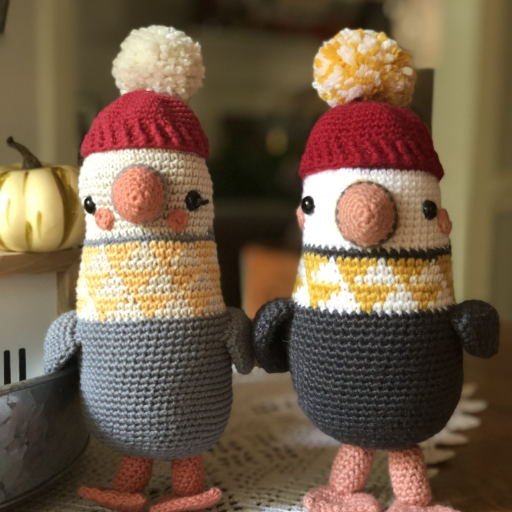
The differences between cotton and acrylic yarn can also be explained by the preservation technique for the specific product in question, choosing just one:
- Durability and Longevity: Acrylic yarn does not lose its strength even after many washes hence it is great for projects that will be subjected to hard-core use such as; bedding, jackets, or cuffs. On the other hand, cotton can be rather powerful, however, less stretchy and is best for projects like table linen and summer costumes that would not experience much pulling strain.
- Texture and Comfort: Cotton yarn has a finer feel which is more breathable and comfortable adding to that their surface is lighter making it preferable for ease constructions. Acrylic yarn unlike the cotton can be warm depending on what type it is since some can be super soft which is nice during winter.
- Care and Maintenance: The use of Acrylic yarn is easy to clean and maintain and does not necessarily need to be hand washed, whereas cotton requires extra care to maintain its. Other than that there is a high probability that particularly because of the presence of complexes, the cotton yarn would exhibit worse “care” performance in the form of large shrinkages and changes to fits.
- Cost: For the reason being that acrylic yarn is cheaper, it is advisable particularly when the cost of materials will be high. Cotton tends to close the gap being more expensive especially when bought as organic or extreme sanitizing measures have been taken.
The selections are as well influenced by the end result of the assignment, personal opinion and the suitability for the purpose.
Best Projects for Acrylic Yarn
- Blankets and Afghans: Acrylic yarn is lightweight and has good low thermal conductance that makes it suitable for making large size afghans and blankets. For such projects, acryl yarn is indispensable as such projects require large quantities of the same material. It also helps that it is washable by machine.
- Sweaters and Cardigans: The durability of acryl makes it the best material for complicated patterns or such that calls for numerous colors other than the basic. It is also light weight which is another advantage and can be found anywhere, it is therefore very warm hence used for everyday winter warm-up garments like warm cardigans and cozy sweaters.
- Hats and Scarves: Acrylic wool can trap heat within itself hence is used in making winter oriented accessories such as scarves and hats. If the material does not fade colors, the clothes can also be used for an extended period of time and still look new.
- Baby Clothes and Blankets: In the case of baby clothes or blanekts, the best yarn to use is acrylic due to the fact that it is less likely to cause itching and very cheap to maintain. Furthermore, it is very soft to touch and provides the infants with gentle feel.
- Amigurumi and Toys: Rather than overstress a problem, the art of amigurumi (creation of knit or crocheted toys) employs acrylic in stuffing the yarn shapes because of its rigidity and colorhold performances. The large number of hues that acrylic may have, also allows for many cultivated regions in the design of toys.
Best Projects for Cotton Yarn
- Dishcloths and Washcloths: Considering the fact that cotton yarn is good for washing and that it can hold liquids well, it is only logical that hogging yarns is a great idea for toilet accessories such as washcloths and dishcloths. Repelling even the most aggressive instance of thickness in usage, the goods’ integrity and texture do not suffer.
- Summer Garments: It is no secret why cotton yarn is a solution for clothing women in the hot season – it is light as a feather and airy, which means it perfectly suits the beachwear like singlets, shawls, and light knits. The material prevents sweating helping the wearer to retain lower temperatures.
- Market Bags and Totes: The firmness of the fabric supplied by cotton yarn acts as a reinforcement for the homemade agricultural practices and marketing strategies and consumption patterns implementing eco-oriented farmers-producers through the provision of bags intended for shopping. These can be laden with a lot of heavy stuff and implies that little stretch is found on the surface material unlike plastic bags.
- Home Décor Items: In making holders, coaters, and furniture runners which are mostly made from crochet or knitted cloths, the effect of cotton yarns is seen when long term exposure even to heat does not weaken the fibers. Cotton has a vintage appeal which enhances the aesthetics of most home interiors.
- Baby Items: Cotton yarn is a suitable choice for baby items such as garments, bibs and blankets due its softness, no allergic reactions and its ability not to irritate the skin. Its significant advantage is that it can be washed with a machine. This means that it can be used frequently.
Choosing the Right Yarn for Your Crochet Project
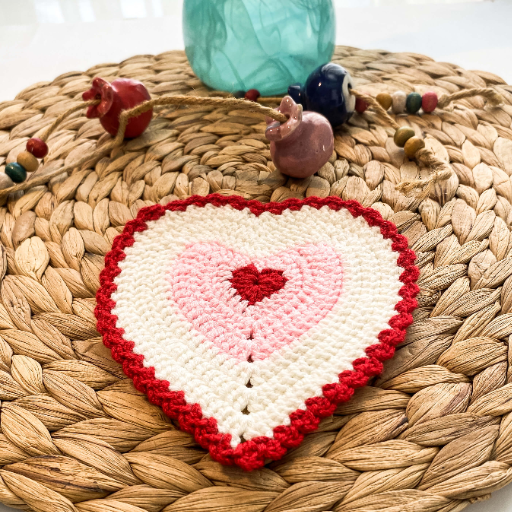
- Project Oriented: Yarn properties differ depending on the different projects under construction. For example, there are projects that are intended to increase the amount of cotton fiber, which is mainly used in baby wear or towel stitching, and that is where the cotton yarn comes in. Conversely, if you have a pattern that is worked in some garment structure parts (i.e. blankets or scarves); the more economical to use increases as the written yarn pattern consumes many yarns, and acrylic yarn is thus recommended than any other yarns as it does not disappoint.
- Yarn Weight: Yarn is not the size of a wall image, but it has its own weight, so you must always consider the weight of yarn that you need for that project. So, crafters have to decide how fine or album quality will be for a garment, as well as the yarn’s fine or album quality. For example, some of the finer weights available are smooth or sport, while the tougher weights are bulky or worsted weight.
- Fiber Content: Carefully go for the right fiber type; natural fibers will always comes with breathability considerations especially the likes of wool and cotton whereas the artificial ones like acrylic will do better in durability and economical perspective.
- Care Instructions: Estimate the frequency at which the completed item will need to be washed or serviced. For activewear items or even those meant to be given as gifts, it is advisable to go far easily washable materials.
- Budget and availability is essential and the yarn used should be within the budget and should ideally be available at all times to ensure the complete success of large projects necessitating extra skeins to be purchased.
These are the befitting pointers that will be of great use in rewarding the craft of crocheting with the right selection of yarn of reasonable tenacity and beauty.
Factors to Consider When Choosing Yarn
- Fiber Content: The fiber content of yarn plays a role in whether the project comes out soft, springy, or hard-wearing. Wool, cotton, and silk are very effective natural materials for creating warmth, breathability, and a soft feeling, but are also less tolerant to careless washing. On the other hand, thermoplastic fibers of acrylic, polyester, etc. are towards the cheaper side in terms of price, easier to manipulate, and light in weight, hence ideal for daily use and wear and tear situations.
- Weight and Thickness: Yarn sizes range from lace to super bulky, each type being suitable for different purposes. Owing to the extreme nature, the lace and fingering yarn belongs to the thin category, which can support delicate and highly decorative patterns such as shawls, while the worsted and bulky yarns are better suited for heavy-duty items such as blankets and sweaters. Fitted pieces always minimize to the appropriate weight of the pattern in order to head off any difficulties with row gauge and size.
- Dye Lot Consistency: The significance of this particular matter cannot be understated because fluctuations in dye lots can cause a rather unappealing section within one pattern. In order to maintain the color synchronization, it is always wise to purchase a sufficient amount of yarn from the same batch codes for the whole project, and always make sure to ascertain the batch code from the fabric label before the purchase.
- Special Treatments: There are specific kinds of yarns that have some unique characteristics, like being superwash, and therefore can be machine washed without any pullout; these are particularly beneficial to making the item last longer. These attributes are effective for specific items that are likely to be tough and involve a lot of washing. Moreover, other types of yarn can be either mixed or enhanced for some properties, like glint enhancement or better weather resistance.
- Environmental and Ethical Considerations: Some yarns are constructed with eco-friendly or reused materials as well as those are considered as free of animal cruelty or are fair trade, to cater for those who are into green practices. Knowing the origin and how the yarn is made will assist in making the project be in line with what one believes. The selection of eco-friendly aspects in crafting helps in enhancing the environment through the crafting activities.
Specific Crochet Projects and Yarn Recommendations
- Lace Shawls and Lightweight Accessories: For delicate lace shawls and light tops for summer, consider a good cotton or bamboo brand. Both these materials are hollow and have a soft, silky texture appropriate for summer garments. For instance, Scheepjes Catona, a 100% mercerized cotton yarn, is strong and has numerous colors to choose from or to create any dense design, giving it an edge in preparing complex patterns.
- Durable Blankets and Afghans: In the making of large blankets or afghans, it is recommended that a mixture of acrylic and wool is used because such projects do not wear out quickly, are cheaper, and easy to maintain. Use Red Heart Super Saver or Lion Brand Wool-Ease Thick & Quick for your projects, and you will always get the desired results, with the latter making an impressive bulky option for a lazy day because of its fast, snuggly projects.
- Amigurumi Toys and Decorative Items: For amigurumi projects, tight spun cotton or acrylic is the best kind, due to the way it stays in place and the shape of the items being done. Buy either Jeans by YarnArt or DK Wow by Paintbox Yarns Cotton for their feature of sliding easily and being available in a lot of shades that are interesting to work with when small hook sizes are used for the reconstruction of toys, which are small in size.
- Winter Garments and Accessories: In order to draw designs to make, scarf, hat or mitten for the winter time, it is necessary to use heat retaining fibers such as alpaca wool, merino wool, or any yarn of the same kind. Such wool quality offered by brands like Cascade 220 Merino and Drops Andes compiling of beautiful and delicate stitches and texture making sure even while warm, the colors and style do not suffer.
Environmental Considerations
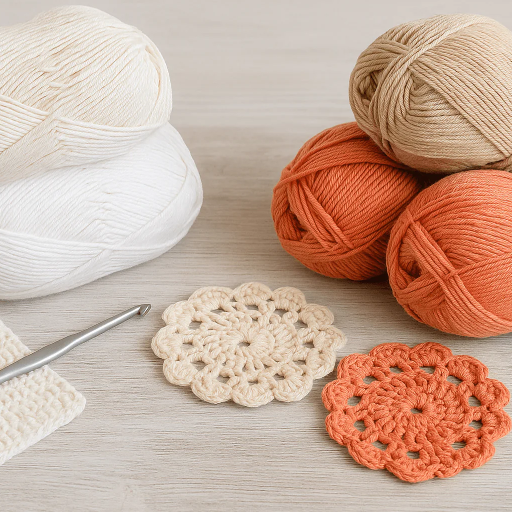
When it comes to fiber selection in aesthetic considerations, invest in fibers that are eco-friendly, meaning that they will not last forever, but rather it is fine with the environment. Natural fibers such as organic cotton, bamboo and hemp are broken down once they are wasted. Such materials are almost always grown without using pesticides or fertilizers, which act almost as toxins. Seek guidance of certifications such as GOTS (Global Organic Textile Standard) or OEKO-TEX Standard 100, so this commitment to environmentally friendly practices is reinforced. Additionally, the use of secondary materials like reclaimed or recycled cloth (woolen and polyester yarns) is worth mentioning to remedy this problem. As much as possible, it is advisable to buy local or fair trade yarn so that the transportation-related CO2 emissions are reduced and people are employed in decent conditions.
Sustainability of Acrylic Yarn
Acrylic yarn is also in high demand for its quality and cost-effectiveness, but its sustainability record is a cause of concern to many people. Although it is very popular and affordable, it is known to be quite bad for the environment because it is synthetic and is made from petrol. It is derived from petrochemicals and due to this, its production depends on non-renewable resources, mainly crude oil. The production is based upon the reaction of monomers, where acrylonitrile is one possible monomer, characterized under the occupational exposure limit (OEL) as an acetal carcinogen. This process uses up an enormous amount of energy, usually emitted from non-renewable fossil fuel, in part or all of the process. Acrylic fibers, when in use, generate microfiber pollution since these fibers are plastic materials that break off while washing the fiber, then fill up the water ecosystems, which causes damage to aquatic life.
However, there are a few things that have somewhat improved in the production of acrylic yarn, with the aim of lessening its harm to the environment. One such method involves reducing chemically based waste during production, known as closed-loop manufacturing, while also looking at developing recycled acrylic in collaboration with other sustainable sources. At the same time, there is some arrangement to ensure the life of acrylic yarn used garments is made longer, by repairs, reusing, or up-cycling so as to prevent resource wastage. However, when the environmental performance of acrylic fibers is compared to that of other types, such as the natural and recycled options, there is still less of the environmental impact, calling for innovative and responsible performance improvement across the value chain of textiles.
Sustainability of Cotton Yarn
In the hierarchy of textiles, cotton fiber is much more desirable than artificial synthetic fibers because of the way it is produced and because it breaks down. Cotton plants absorb carbon during their growth, which is contrary to the man-made acrylic, which is always at a higher risk in terms of the environmental footprint. Yet, the same statement falls into disrepute as different farming and water-charging practices contribute to varied environmental implications of cotton production. Traditional methods of growing cotton are characterized by a high dependence on water, with some estimates putting the water consumption to produce one kilo of cotton as high as 10000 litres. In the same vein, the practice of using agrochemicals in the cultivation process of normal cotton has further simplified the destruction of soil, the pollution of water, and also decreases the existence of many organisms.
Reference Sources
-
Warping Parameters Influence on Warp Yarns Properties: This study examined the tensile strength and elongation of cotton, spun polyester, and polyacrylic yarns under different warping conditions. Polyacrylic yarns demonstrated higher elongation percentages due to their inherent elasticity, while polyester yarns showed superior tensile strength.
-
Antibacterial and Comfort Properties of Untreated Bamboo Fabric Related to Cotton Fabrics Treated with Zinc Oxide: Bamboo fabrics exhibited superior moisture management, antibacterial properties, and comfort compared to cotton fabrics treated with zinc oxide. Bamboo’s natural properties made it more breathable and absorbent, while ZnO-treated cotton showed enhanced antibacterial activity but less comfort.
-
Current Situation of Environment Protection Sizing Agent and Paste: The paper explored the environmental impact of sizing agents, including acrylic and modified starch. Acrylic sizing agents were highlighted for their excellent adhesion and flexibility, making them suitable for hydrophobic fibers.
Frequently Asked Questions (FAQs)
Q: Cotton vs Acrylic: What’s the Difference?
A: The primary difference between cotton and acrylic yarn lies in their composition. Cotton yarn is a natural fiber made from the fibers of the cotton plant, while acrylic yarn is a synthetic fiber made from petroleum-based products. This means that cotton yarn is biodegradable, whereas acrylic yarn is not. Additionally, cotton yarn tends to be more absorbent and breathable, making it ideal for warm-weather projects, while acrylic yarn often provides better durability and color retention. When choosing between cotton and acrylic for your next crochet project, consider the desired texture and purpose of your creation.
Q: Which is Better: Cotton or Acrylic Yarn?
A: The choice between cotton and acrylic yarn ultimately depends on the specific requirements of your project. Cotton yarn is a good choice if you want a natural feel and breathability, making it suitable for garments and summer items. On the other hand, acrylic yarn is often easier to care for, as it is machine washable and resistant to moths and mildew. If you’re looking for a wide range of colors and textures, both types of yarn offer diverse options, but acrylic may have a slight edge in terms of vibrant color availability. Ultimately, the best yarn for your project will depend on your preferences and the intended use of the finished item.
Q: Can You Use Cotton Yarn for Knitting and Crochet?
A: Cotton yarn can be used effectively for both knitting and crochet, and it’s particularly popular for summer garments and dishcloths. While it may not have the same stretch as synthetic yarn, cotton yarn is known for its stitch definition, making it a favorite among crafters who want their patterns to be crisp and clear. Additionally, cotton yarn is also less prone to pilling compared to some synthetic options. However, if you’re looking for elasticity in your finished piece, you might want to consider a cotton blend that incorporates synthetic fibers, providing both the benefits of cotton and added stretch.
Q: Is Acrylic Yarn Durable for Long-Term Projects?
A: Acrylic yarn is generally recognized for its durability, making it a great choice for long-term projects. Unlike cotton yarn, which can weaken when exposed to prolonged sunlight, acrylic yarn will last through wear and washing without losing its vibrancy. This characteristic makes it a popular choice for items like blankets and toys that may see heavy use. Furthermore, acrylic yarn is resistant to fading and holds its shape well over time. If you’re considering using acrylic yarn instead of cotton, rest assured that your project will maintain its appearance and functionality for years to come.








